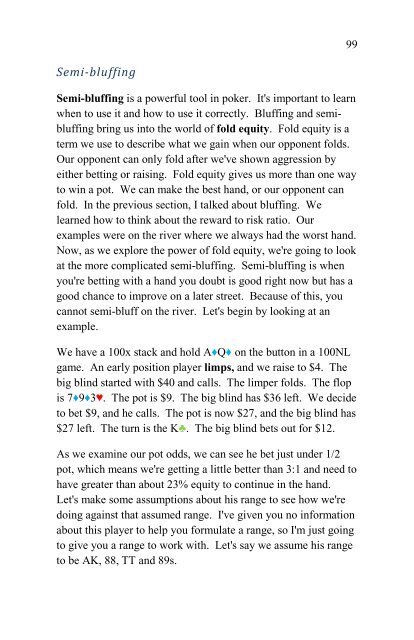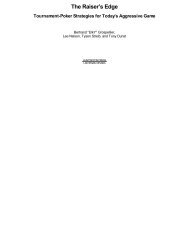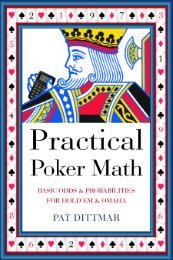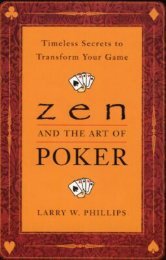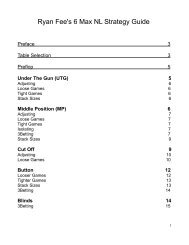Create successful ePaper yourself
Turn your PDF publications into a flip-book with our unique Google optimized e-Paper software.
Semi-bluffing<br />
Semi-bluffing is a powerful tool in poker. It's important to learn<br />
when to use it and how to use it correctly. Bluffing and semibluffing<br />
bring us into the world of fold equity. Fold equity is a<br />
term we use to describe what we gain when our opponent folds.<br />
Our opponent can only fold after we've shown aggression by<br />
either betting or raising. Fold equity gives us more than one way<br />
to win a pot. We can make the best hand, or our opponent can<br />
fold. In the previous section, I talked about bluffing. We<br />
learned how to think about the reward to risk ratio. Our<br />
examples were on the river where we always had the worst hand.<br />
Now, as we explore the power of fold equity, we're going to look<br />
at the more complicated semi-bluffing. Semi-bluffing is when<br />
you're betting with a hand you doubt is good right now but has a<br />
good chance to improve on a later street. Because of this, you<br />
cannot semi-bluff on the river. Let's begin by looking at an<br />
example.<br />
We have a 100x stack and hold A♦Q♦ on the button in a 100NL<br />
game. An early position player limps, and we raise to $4. The<br />
big blind started with $40 and calls. The limper folds. The flop<br />
is 7♦9♦3♥. The pot is $9. The big blind has $36 left. We decide<br />
to bet $9, and he calls. The pot is now $27, and the big blind has<br />
$27 left. The turn is the K♣. The big blind bets out for $12.<br />
As we examine our pot odds, we can see he bet just under 1/2<br />
pot, which means we're getting a little better than 3:1 and need to<br />
have greater than about 23% equity to continue in the hand.<br />
Let's make some assumptions about his range to see how we're<br />
doing against that assumed range. I've given you no information<br />
about this player to help you formulate a range, so I'm just going<br />
to give you a range to work with. Let's say we assume his range<br />
to be AK, 88, TT and 89s.<br />
99


